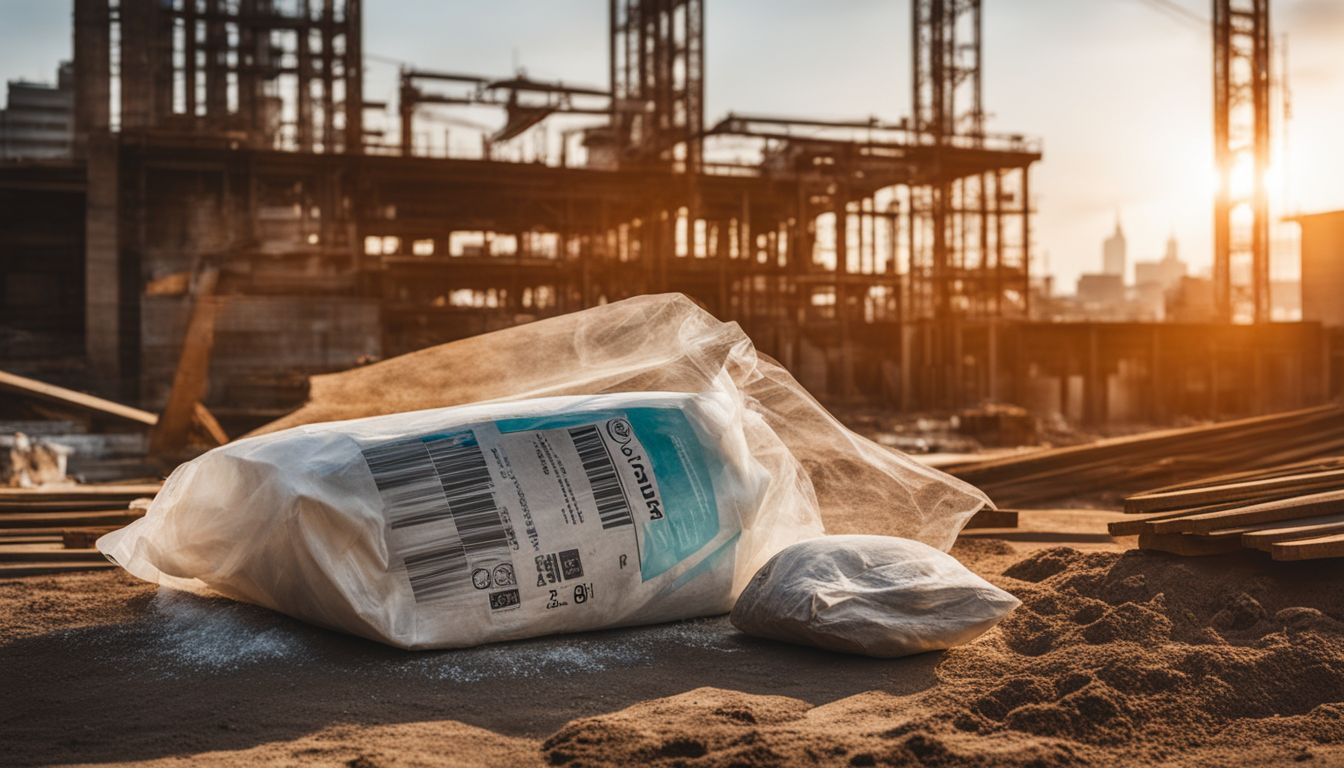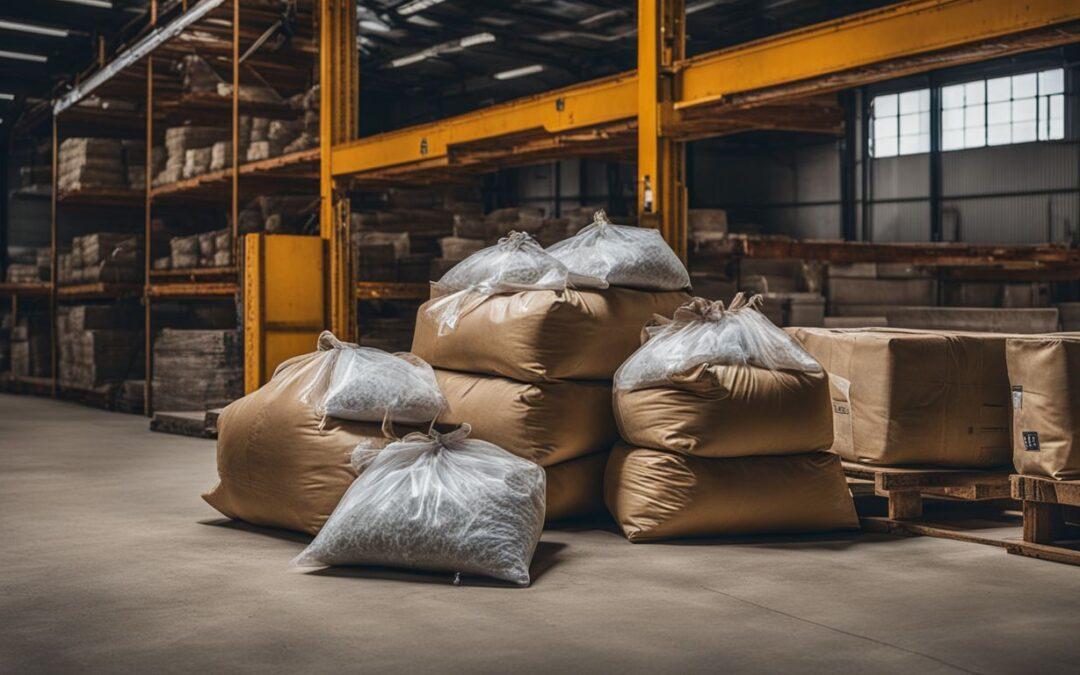Understanding the difference between cement vs concrete can often puzzle those looking into materials for construction projects. Are they the same thing? This common question arises when planning new constructions or renovations, revealing a gap in knowledge that many commercial property managers and residential homeowners might encounter.
An intriguing fact to note is that cement is actually an ingredient of concrete, not a standalone building material. Our article sheds light on this distinction, delving into the composition, benefits, and applications of each to equip you with the knowledge needed to make informed decisions for your property.
Key Takeaways
- Cement is a key ingredient in concrete, made mostly of calcium and silica, which undergoes a complex production process starting from mining to packaging. This makes cement the backbone of many construction materials due to its binding properties.
- Concrete combines cement with water and aggregates like sand or gravel to form a durable building material that can withstand extreme weather, heavy loads, and time. It’s used in various structures such as sidewalks, buildings, bridges, and more because of its strength.
- The environmental impact of producing cement leads innovators to develop eco-friendly concrete technologies. These new methods aim to reduce carbon emissions and incorporate recycled materials without compromising strength or durability.
- Performance-based specifications for cement and concrete usage encourage the use of blended cements and innovative technologies. This approach aligns with sustainable development goals by reducing greenhouse gases (GHGs) during production.
- Concrete’s versatility allows it not only to be essential in modern infrastructure but also paves the way for innovations seeking sustainability. By incorporating advanced eco-friendly techniques in its manufacturing process, concrete continues evolving as an indispensable yet environmentally responsible material in construction projects.
Defining Cement

Cement serves as a fundamental building block in the construction world, setting the stage for powerful and enduring structures. Crafted through a rigorous process that combines calcium and silica, it emerges as the key ingredient vital for creating concrete’s robust framework.
Key Ingredients of Cement: Calcium and Silica
Cement relies heavily on its key ingredients: calcium and silica. These elements form the backbone of many construction projects, acting as critical components in the building material’s strength and durability.
Around 85% of cement is made up of lime (calcium) and silica, which come together to create a mixture that hardens and binds other materials effectively. At the heart of every construction project lies a simple yet powerful combination: calcium and silica.
The production process begins with extracting limestone, rich in calcium, combined with a source of silica such as sand or industrial by-products like slag. This blend undergoes high-temperature treatment to form calcium silicate, the primary compound responsible for cement’s binding properties.
When mixed with water, this leads to the creation of calcium silicate hydrate—a crucial molecule in concrete production that ensures longevity and resilience in constructed structures.
The Production Process of Cement
Understanding the production process of cement is crucial. It involves a complex sequence from sourcing raw materials to the finished product. Here’s an insight into the journey:
- Mining starts this intricate process, extracting limestone and silica from the earth, which are essential raw materials for cement production.
- Following mining, these materials undergo crushing to reduce them to smaller sizes, making them easier to handle and process.
- The crushed materials then get mixed with other industrial byproducts like slag, adding chemical diversity and strength to the mix.
- This mixture is heated in a kiln at extremely high temperatures, initiating a series of chemical reactions that transform it into clinker.
- Once formed, clinker appears as small lumps or nodules and is then cooled down rapidly to preserve its reactive properties.
- After cooling, the clinker gets ground into a fine powder; at this stage, gypsum is added to prevent the cement from setting too quickly when used.
- The final step involves meticulously testing and packaging the cement, ensuring it meets industry standards before it reaches construction sites.
Each of these steps is vital in creating cement that meets the rigorous demands of modern construction projects.
Exploring Concrete

Diving into the world of concrete reveals its foundational role in modern construction. This building material combines cement, water, and aggregates to create structures that stand the test of time.
Core Components of Concrete: Cement, Water, and Aggregates
Cement, water, and aggregates are the foundational elements of concrete construction. Cement acts as the glue that holds everything together. When mixed with water, it forms a paste that binds the aggregate materials—usually sand and gravel or crushed stone—into a solid mass.
This mixture determines not only the durability but also the strength of the concrete once it cures.
Understanding the correct proportions of cement, water, and aggregates is crucial for commercial property managers overseeing construction projects. The water-cement ratio significantly influences concrete’s final strength and durability.
Proper aggregate size and gradation can affect how compactable and manageable the concrete is during placement. Managers must ensure that these components are precisely balanced to achieve high-quality concrete that meets specific project requirements without compromising on safety or aesthetics.
Distinctive Characteristics: Cement vs Concrete
Understanding the distinctive characteristics between cement and concrete is pivotal for property owners and managers who aim to make informed decisions about construction materials. This knowledge ensures the selection of the right materials for durability, cost-effectiveness, and sustainability. Below is a detailed comparison to illustrate their unique properties and applications.
| Aspect | Cement | Concrete |
|---|---|---|
| Composition | A fine powder made of calcium, silica, and other ingredients. | A mixture of cement, water, sand, and gravel. |
| Role | Acts as a binding agent. | Serves as a structural building material. |
| Setting Time | Sets in a few hours but needs days to cure fully. | Takes longer to set but achieves full strength over weeks. |
| Strength | Without other materials, it has limited strength. | Highly durable and strong due to the aggregate mixture. |
| Uses | Utilized mainly in the production of concrete and mortar. | Widely used in construction of buildings, sidewalks, and bridges. |
| Environmental Impact | Production is energy-intensive and emits CO2. | Recyclable and can incorporate sustainable materials to lower carbon footprint. |
This table underscores the fundamental differences between cement and concrete, emphasizing their unique attributes, roles, and environmental considerations. Moving forward, it’s essential to explore the benefits and applications of concrete to further understand why it’s a favored material in the construction industry.
Benefits and Applications of Concrete
Concrete’s exceptional strength and durability make it an indispensable material in construction, offering long-term performance with minimal maintenance. Its versatility allows for its use in various structures, including sidewalks and buildings, underscoring its pivotal role in modern infrastructure.
Strength and Durability of Concrete
Concrete stands as a testament to endurance and robustness, making it an unparalleled choice for commercial projects and residential properties alike. Its impressive strength allows it to resist extreme weather conditions, heavy traffic, and the wear of time.
Boasting high-strength ratings between 7,000 and 14,500 psi highlights its capability to support structures under immense stress. This resilience ensures that buildings and sidewalks endure for decades without significant deterioration.
Property managers and homeowners can rely on concrete for its longevity and sturdiness in construction projects. It forms reliable foundations that remain solid against environmental threats, showcasing unmatched toughness.
The material’s resistance adds value by minimizing maintenance costs over time.
Notable Concrete Constructions: Sidewalks and Buildings
Concrete’s versatility and durability make it a cornerstone in the construction industry. It serves as the backbone for various notable constructions, including sidewalks and buildings, offering strength, sustainability, and low maintenance.
Sidewalks made from concrete provide a safe and smooth surface for pedestrians. This infrastructure is designed to last decades with minimal upkeep, thanks to concrete’s robust nature.
Skyscrapers rely on concrete for their foundations and core structures, utilizing its capacity to support immense weight and withstand natural disasters.
Bridges benefit from concrete’s strength, allowing them to span great distances and bear heavy loads, ensuring reliability for countless vehicles daily.
Parking lots use concrete for paving due to its ability to endure high traffic volumes while maintaining structural integrity over years of use.
Dams are constructed with reinforced concrete that holds back massive volumes of water, demonstrating unmatched resilience and longevity.
Sports stadiums take advantage of concrete’s versatility for both structural framework and seating areas, accommodating thousands of spectators safely.
Concrete pavements enhance driving experience by providing a smoother ride for cars, as well as increasing fuel efficiency due to less rolling resistance.
Educational institutions often feature concrete in their architecture for its energy-efficient properties, contributing to more sustainable campuses.
Hospitals utilize concrete not only for its structural benefits but also because it aids in creating cleaner environments—a key consideration in medical facilities.
Historical landmarks around the world showcase the lasting legacy of concrete construction techniques across centuries, standing testaments to its enduring appeal and functionality.
Environmental Impact and Innovations in Concrete
The construction industry faces growing scrutiny over the environmental impact of its materials, including concrete. Innovators are actively developing new technologies to make concrete more eco-friendly and sustainable for future projects.
Enhancing Sustainability in Cement and Concrete Use
Switching to performance-based specifications can revolutionize the construction industry’s approach to sustainability in cement and concrete use. This shift encourages innovation, aligns with sustainable development goals, and meets both cost-effectiveness and environmental objectives.
Performance-based standards open doors for the use of blended cements which consume less fuel and produce fewer greenhouse gases (GHGs) during production. They also increase the potential for incorporating eco-friendly building materials that contribute to resilient infrastructure.
Innovative concrete technology plays a critical role in reducing the carbon footprint of buildings while maintaining strength and durability. Low-carbon concrete, a result of ongoing research and development within the industry, offers an energy-efficient solution that supports green building practices without compromising on quality or resilience against natural disasters.
These advancements not only enhance sustainability but also pave the way for creating energy-efficient building materials that promise long life cycles and lower life-cycle costs, making them ideal choices for those focused on environmentally friendly construction.
Advances in Eco-friendly Concrete Technologies
Building on the foundation of enhancing sustainability, the industry turns towards advances in eco-friendly concrete technologies. These innovations aim to reduce environmental impact while maintaining quality and durability.
Eco Material’s technology drastically reduces carbon emissions during cement production, offering a low-carbon concrete alternative. This shift represents a significant step toward carbon-neutral construction practices.
Incorporation of recycled aggregates into concrete mixes utilizes waste materials effectively, turning potential landfill content into valuable construction components.
The development of green building materials now includes concrete formulations that minimize energy use and carbon footprint during manufacturing processes.
Sustainable building practices are being revolutionized with eco-conscious concrete that incorporates renewable resources and lessens dependence on traditional cement.
Breakthroughs in eco-friendly construction also involve enhancing the strength and durability of green concrete, ensuring it meets or surpasses traditional standards.
Innovations include smart materials that adapt to environmental changes, improving the longevity and sustainability of constructions without extra maintenance.
Ecofriendly manufacturing techniques focus on reducing water usage and promoting recycling efforts within the production cycle of concrete, aligning with sustainable construction goals.
Contact S&K Asphalt & Concrete Today!
Understanding the key differences between cement vs concrete empowers property owners. This knowledge guides the selection of materials for construction projects, ensuring optimal performance and durability.
With insights into composition, benefits, and environmental impacts, making informed decisions becomes straightforward. Contact S&K Asphalt & Concrete today to receive expert assistance in selecting the right material for your next commercial or residential project. Our experienced contractors will guide you through the process from planning to installation, delivering superior results.
FAQs
1. What is the main difference between cement vs concrete?
Cement acts as a binder in concrete, which combines cement with other materials like sand and gravel.
2. Can I use cement alone for building structures?
No, cement cannot be used alone for building; it needs to be mixed into concrete.
3. Is concrete stronger than cement?
Yes, when cured, concrete becomes much stronger and more durable than cement alone due to its composite nature.
4. How long does it take for concrete to fully harden?
Concrete typically takes about 28 days to fully cure or harden but can vary based on conditions.
5. Do both cement and concrete work well in all weather conditions?
Concrete performs well in various weather conditions once cured, making it suitable for many construction projects.

Nick Skeriotis leads S&K Asphalt and Concrete, a company renowned for its expertise in paving services. Nick’s commitment to excellence and innovation in asphalt and concrete solutions has established the company as a leader in the industry. With a focus on durability, aesthetics, and customer satisfaction, S&K delivers high-quality paving services for residential, commercial, and municipal projects. Nick and his team are dedicated to advancing the field of asphalt paving, offering expertise on maintenance, repair, and the latest paving technologies to ensure long-lasting, beautiful surfaces.
